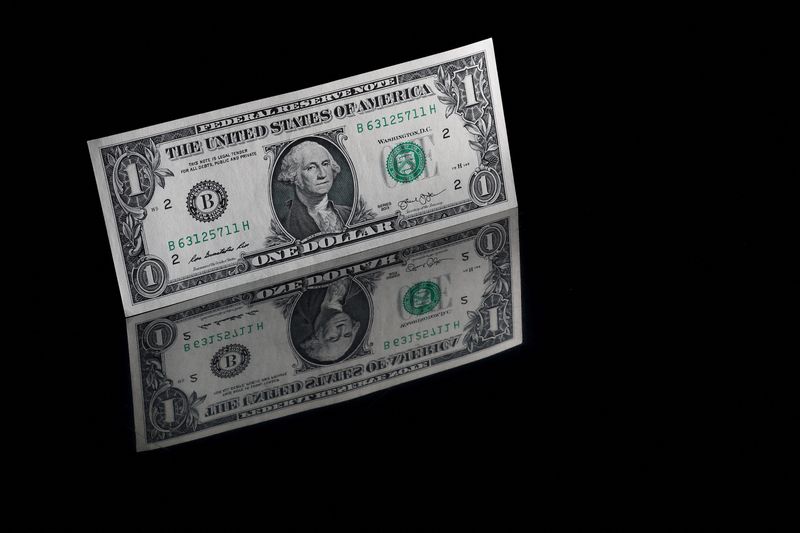[ad_1]

© Reuters. FILE PHOTO: A U.S. one dollar banknote is seen in this illustration taken November 23, 2021. REUTERS/Murad Sezer/Illustration/File Photo
By Ankur Banerjee and Samuel Indyk
SINGAPORE/LONDON (Reuters) – The dollar fell on Monday on heightened expectations the Federal Reserve will be less aggressive with monetary policy as authorities stepped in to limit the fallout from the sudden collapse of Silicon Valley Bank.
The U.S. government announced several measures early in the Asian trading day, saying all SVB customers will have access to their deposits starting on Monday.
The authorities also said depositors of New York’s Signature Bank (NASDAQ:), which was closed on Sunday by the New York state financial regulator, would be made whole at no loss to the taxpayer.
The Fed announced it would make additional funding available through a new Bank Term Funding Program, which would offer loans up to one year to depository institutions, backed by Treasuries and other assets these institutions hold.
The market turmoil from the SVB collapse led investors to speculate the Fed will no longer raise interest rates by a super-sized 50 basis points this month. Focus will now be on Tuesday’s inflation data to gauge how hawkish the Fed is likely to be.
The , which measures the U.S. currency against six others, slipped as much as 0.55% to near one-month lows of 103.67 after Goldman Sachs (NYSE:) said it no longer expects the Fed to deliver a rate hike at its March 22 meeting. The index was last at 103.92.
The market is now pricing a nearly 33% chance of the Fed sticking to its current rate and an 67% chance of a 25 basis point hike. In contrast, the market was pricing a 70% chance of a 50 basis point hike before the SVB collapse.
“There’s been a radical change in interest rate expectations and in that scenario the dollar has weakened,” said Niels Christensen, chief analyst at Nordea.
“The reason we’re seeing such repricing in rate hike expectations is the collapse of the banks. If we don’t see any spreading, expectations for rate hikes should be revived quickly.”
Meanwhile, the euro was up 0.67% at $1.0704, hovering near the one-month high of $1.0737 hit earlier, ahead of the European Central Bank’s policy meeting on Thursday.
“The ECB is still expected to deliver a 50-basis point hike,” Nordea’s Christensen added.
“The question is how hawkish will the ECB be. We think they’ll signal there will be more rate hikes to come.”
Safe-haven currencies, such as the Japanese yen and Swiss franc benefited from the fallout from SVB.
The yen strengthened 0.8% to 133.88 per U.S. dollar, having touched a one-month high of 133.58 earlier in the session, while the greenback fell 0.6% versus the franc to 0.9155.
Sterling was last trading at $1.2105, up 0.57% on the day.
The Australian dollar surged 1.16% to $0.6659, and was on track for its biggest one-day percentage jump since Feb. 1. The gained 1% to trade at $0.6195.
The two-year U.S. Treasury yield, which typically moves in step with interest rate expectations, was down 23 basis points at 4.3575%, on track for its biggest three-day decline since Black Monday in 1987.
and other cryptocurrencies rallied over the weekend, with bitcoin last at $22,357 and ether at $1,595.
[ad_2]
Source link
(This article is generated through the syndicated feed sources, Financetin doesn’t own any part of this article)
